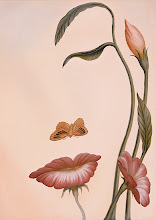
When Rene Laennec was 5 years of age, his mother died of tuberculosis, and he was sent to live with an uncle who was a priest. At the end of the French revolution, 4 years later, Laennec was sent to live with another uncle, Dr Guillaume Laennec of Nantes, and remained with him until he was 19 years of age. Dr Laennec's was a pious Catholic household with a humanistic cultural environment that, of course, included an interest in medicine.
In 1800, Laennec left for Paris to seek medical education with Corvisart at La Charite Hospital. There he manifested an avidity for anatomy, pathology, clinical medicine, research, and writing papers. He received a degree in 1804, and continued with his mentor.
Laennec accepted an offer in 1816 from Necker Hospital to serve as physician. It was there that he invented the stethoscope. Laennec diligently followed patients with chest ailments from the bedside to the autopsy table, and correlated sounds heard with organ pathology found. He soon reached the conclusion that intrathoracic organs generated specific sounds with speaking, breathing, and coughing in health and in disease; and that these sounds could be conveyed to the ear with a stethoscope. Laennec developed an instinctive skill in the diagnosis of intrathoracic organ disease from sounds heard with the new instrument.
In 1819, Laennec published the results of his research, Traite de l'auscultation mediate et des maladies des poumons et des coeur. The following passage related how the stethoscope was invented and its usefulness: "In 1816, I was consulted by a young woman with symptoms of a diseased heart...percussion was of little avail on account ...of fatness. The application of the ear... inadmissible by the age and sex of the patient. I recollected a fact in acoustics ... the augmented sound conveyed through solid bodies....I rolled a quire of paper into a cylinder and applied one end to the heart and one end to the ear...and thereby perceived the action of the heart...more clear and distinct. I have been enabled to discover new signs of the diseases of the lungs, heart and pleura."
During all his life of 45 years, Laennec was thin and sickly looking, but this did not limit his practice, teaching, research, hospital responsibilities, and writing. Arduous work, however, finally took its toll on his health: "I know that I have risked my life, but the book I'm going to publish will be, I hope, useful enough to be of more value than the life of a man."
Laennec left for Brittany, his birthplace, recovered his health, and returned to Paris in 1822. He succeeded his deceased mentor at the College de France, was appointed professor of medicine at both Necker and La Charite, and was made a Knight of the Legion of Honor. Foreign students flocked to Paris to learn the new medicine and the use of precussion and the stethoscope. Some were Americans who returned home inspired to transform a stagnant medicine.
The second edition of Traite (1826) introduced a nomenclature of auscultatory sounds (rales, fremitus, egophony, pectoriloquy, bronchophony) heard in organ pathology that formerly was called "lung fever." Again arduous work severely taxed Laennec's health and strength. He returned to Brittany and died on August 13, 1826.
It was not until 1821 that The New England Journal of Medicine reported the invention of the stethoscope. In 1885, a professor of medicine in the United States stated, "He that hath ears to hear, let him use his ears and not a stethoscope"; and the founder of the American Heart Association, L. A. Connor (1866-1950) carried a silk handkerchief to place on the wall of the chest for ear auscultation. Nevertheless, this useful substitute for the ear quickly began winning converts.
The word stethoscope comes from the Greek words stethos meaning "chest", and skopos meaning "observer."
Read the original article, The inventor of the stethoscope: Rene Laennec - Journal of Family Practice, August, 1993 by Harry Bloch http://findarticles.com/p/articles/mi_m0689/is_n2_v37/ai_13248765/

No comments:
Post a Comment